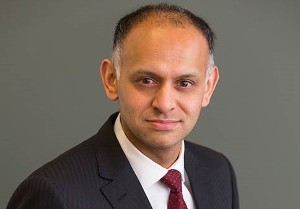
David Boyle
When I think of a sidecar I automatically picture a speedway motorcycle tearing around a racetrack with some poor soul hanging on for grim death attached to a pocket rocket. They are there to balance the rider and keep them on track so they don't career off into the crash barrier.
When I think about the investment world the analogies are not too dissimilar for your personal financial wellbeing especially when you decide to take a more active interest in your investments. A “sidecar” investment alongside your KiwiSaver account will provide you with more stability and help offset any bumps along life’s highway. More to the point you should be in a far better position financially as well. The key benefit is that you will have more flexibility but more on this later.
I first came across the “sidecar” idea when I was at the Commission for Financial Capability (CFFC). In 2018 at our Summit on financial capability I proposed the idea of developing a savings sidecar/emergency fund to be linked to investors’ KiwiSaver accounts.
The theory being before New Zealanders invested long-term, via KiwiSaver, they could use the central savings mechanism, via their employer and Inland Revenue, to have their contributions going into a rainy-day savings account.
This could be capped at a certain level, then all future contributions would go into their KiwiSaver fund. This would help mitigate the risk of using payday lenders and loan sharks to pay for life’s short-term emergencies like car repairs, redundancies and funerals for example. This would also help mitigate the growing number of hardship requests and the cost of delivery for that service which, ultimately, all KiwiSaver members pay for.
So it gave me much delight to see its inclusion in the CFFC’s recommendations as part of the 2019 Review of Retirement Income Policies.
The investment sidecar is just another extension to help achieve a better outcome in retirement after KiwiSaver. Let me explain. In most cases you maximise your benefits in KiwiSaver at 3%. This is because your employer is generally required to match your contribution at 3% and, if you are earning more than $35,000 a year, you will get the maximum government contribution of $521.46.
So, the question for some people is why would you want to add more to your KiwiSaver fund and have all those extra savings locked in to age 65?
The book Richest Man in Babylon, by George S Clason, suggests that paying yourself first is key and the rule of thumb is saving around 10% of your income. So if you were putting 3% into your KiwiSaver and your employer was doing the same this leaves you 4% to invest. This could go into a range of other options that allow you some flexibility, if needed, while also offering you some diversification from your current provider.
For example if you were 30 today, earning $50k a year, and had $20k in your KiwiSaver balanced fund, at the age of 65 you would have something like $413,000 in today’s dollars, going by the Sorted KiwiSaver calculator. If you added an additional $40 a week into your sidecar investment fund that earned a return of 5% net of fees you would have an additional $192,000 in today’s dollars, to improve your lifestyle in retirement going by the Sorted savings calculator.
The outcome of course would be very similar if you just popped those extra contributions in KiwiSaver but you would have less flexibility. The key one being your funds will be locked in until 65, unless you are buying your first home; have severe financial hardship; or end up in the very unfortunate position of not making it past the retirement winning post.
The benefits of saving outside KiwiSaver are:
- Access to the funds if you really need them.
- A broader range of investment choices, ie not just a range of diversified funds that are based on risk and return outcomes, but specific sectors like fixed interest; New Zealand shares; global shares; and property – directly or indirectly.
- It allows you to diversify your manager risk. By that I mean you are not putting all your eggs in one provider’s basket.
- It allows you access to different styles of manager. Some that are cheap and cheerful, like passive funds, or you might like to pick a manager who is more active and tries to beat their investment benchmark after fees.
- You can also change your dollar contribution rate relative to your personal circumstances. Meaning you can manage your saving contributions not as a % of salary but the actual dollar amount you want to save.
All this is based on having extra savings available to pay for your sidecar. The outcome will fluctuate depending on how well you manage the race, how good your mechanic is (always good to get a little financial advice to make sure everything is running well) and of course the conditions you have to deal with to get to the finish line.
Disclaimer: David Boyle is Head of Sales and Marketing at Mint Asset Management Limited. The above article is intended to provide information and does not purport to give investment advice.
Mint Asset Management is the issuer of the Mint Asset Management Funds. Download a copy of the product disclosure statement here: www.mintasset.co.nz



